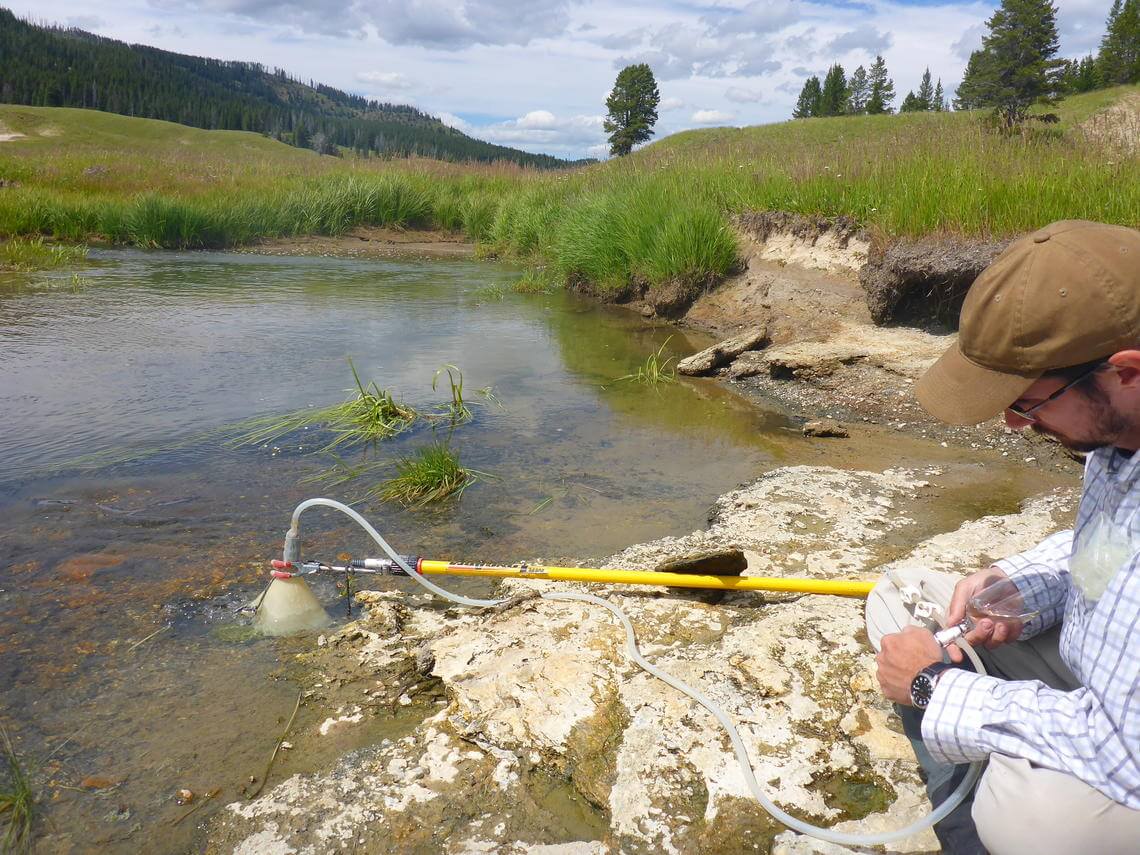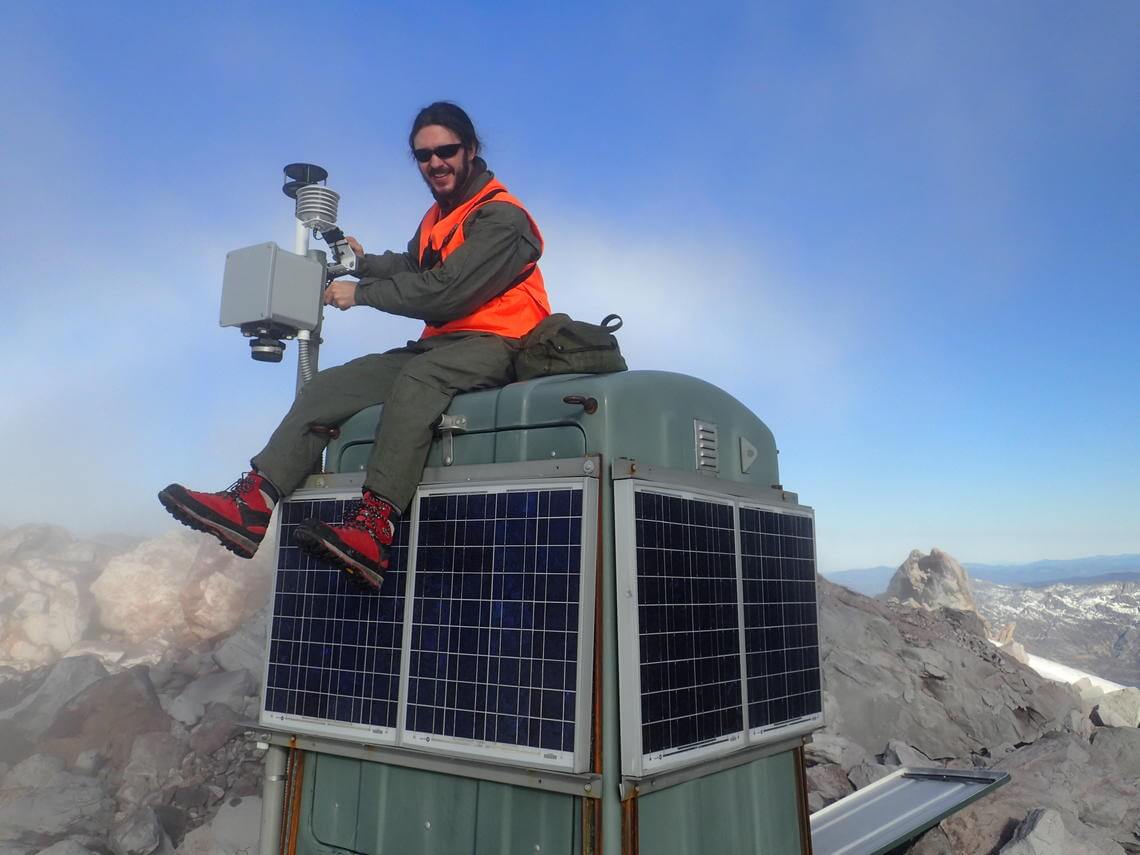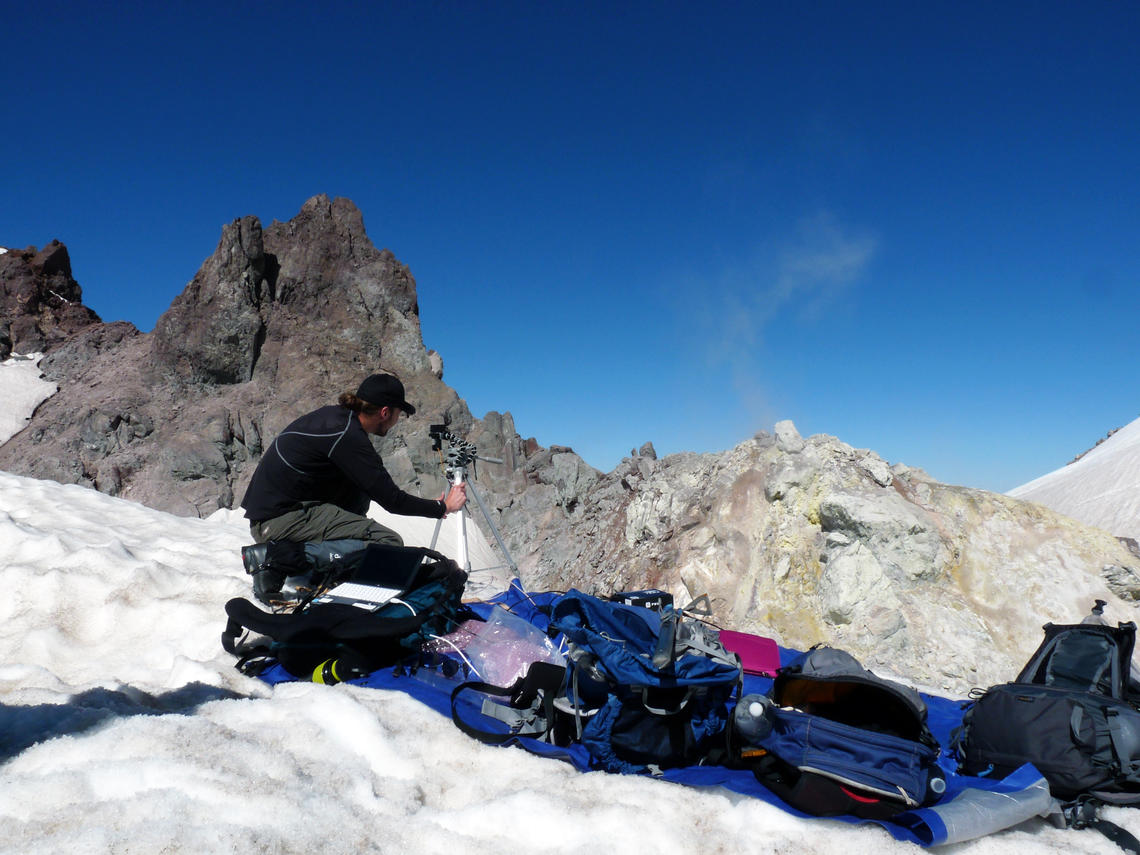BUILDING RISK KNOWLEDGE
WHY THE FOUNDATION WAS BORN? >
WHY THE FOUNDATION WAS BORN? >
DISASTERS ARE NOT NATURAL, they are socially built, due to lack of preparation, prevention, mitigation work, education and monitoring. They are natural risks or hazards that impact vulnerable societies. Knowledge help reducing social and structural vulnerability in order to have more resilient societies!
Gas concentrations and emission rates (the rate at which gas is released) are measured using airborne or ground-based techniques, both during periods of relative calm and during periods of high volcanic activity. Large gas plumes can even be measured by instruments mounted on satellites orbiting the earth.
One method of sampling volcanic gases is to collect them directly from fumaroles in vacuum flasks or solution-filled bottles and then analyse the mixtures in the laboratory. This type of “direct sampling” of fumarole gases is currently the only way to fully characterise the composition of gases released from volcanoes and to collect the isotopic data needed to determine the origin of certain gases. This allows us to have a complete understanding of the state of the volcano and its evolution.

Gas collection from a bubbling source within Pelican Creek, Yellowstone. Inverted funnel placed over gas source, gas travels through tubing into evacuated/vacuum glas flask to be analyzed in lab.
MultiGAS instruments can also be used for direct sampling and effectively monitor multiple gases at once. Using a combination of optical and electrochemical sensors, these instrument sets can measure CO2, SO2 and H2S concentrations as well as environmental parameters such as temperature and pressure. They are usually transported to fumaroles or outgassing vents during measurement campaigns, or even permanently installed at locations downwind of these vents. Instead of collecting the gases for later analysis, the data collected can be transmitted by radio to a volcanic observatory, allowing minute-by-minute recording of changes in gas concentration.
Direct gas sampling can measure the relative amount of gas (concentration), but it does not provide information on emission rates – this is where remote sensing techniques excel. A COSPEC or DOAS spectrometer measures the amount of sulphur dioxide emitted into the atmosphere every second, hour or day. DOAS instruments attached to satellites can be used to detect very large SO2 plumes.

MultiGAS monitoring instrument installed on the dome in Mount St. Helens crater. Gas haze to the left of enclosure travels into round/black sensor (bottom of gray box) and is analyzed internally.

USGS geologist uses a UV spectrometer to detect gases from fumerole at Crater Rock, Mount Hood.
VOLCANO ACTIVE FOUNDATION RESPONSABILITY
nº 2195 authorised by the Madrid's Minister of Justice
NIF G67314625
SF Abocados Francesc Macia 7 pl17
08029 Barcelona, Spain
We may request cookies to be set on your device. We use cookies to let us know when you visit our websites, how you interact with us, to enrich your user experience, and to customize your relationship with our website.
Click on the different category headings to find out more. You can also change some of your preferences. Note that blocking some types of cookies may impact your experience on our websites and the services we are able to offer.
These cookies are strictly necessary to provide you with services available through our website and to use some of its features.
Because these cookies are strictly necessary to deliver the website, refusing them will have impact how our site functions. You always can block or delete cookies by changing your browser settings and force blocking all cookies on this website. But this will always prompt you to accept/refuse cookies when revisiting our site.
We fully respect if you want to refuse cookies but to avoid asking you again and again kindly allow us to store a cookie for that. You are free to opt out any time or opt in for other cookies to get a better experience. If you refuse cookies we will remove all set cookies in our domain.
We provide you with a list of stored cookies on your computer in our domain so you can check what we stored. Due to security reasons we are not able to show or modify cookies from other domains. You can check these in your browser security settings.
These cookies collect information that is used either in aggregate form to help us understand how our website is being used or how effective our marketing campaigns are, or to help us customize our website and application for you in order to enhance your experience.
If you do not want that we track your visit to our site you can disable tracking in your browser here:
We also use different external services like Google Webfonts, Google Maps, and external Video providers. Since these providers may collect personal data like your IP address we allow you to block them here. Please be aware that this might heavily reduce the functionality and appearance of our site. Changes will take effect once you reload the page.
Google Webfont Settings:
Google Map Settings:
Google reCaptcha Settings:
Vimeo and Youtube video embeds:
The following cookies are also needed - You can choose if you want to allow them:
You can read about our cookies and privacy settings in detail on our Privacy Policy Page.
PRIVACY POLICY